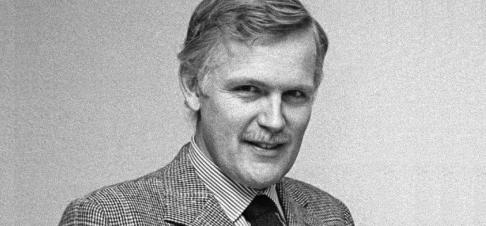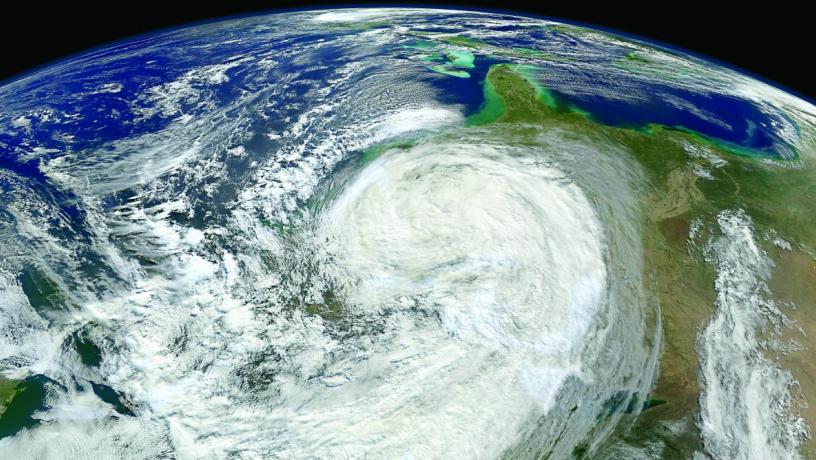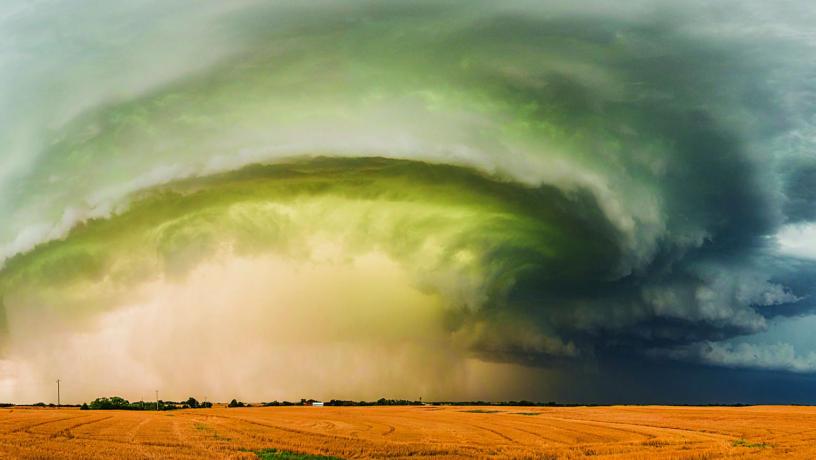Adam Sobel
Sustainability
Extreme Weatherman
It might be an insult to claim someone has his head in the clouds; for Adam Sobel, professor of applied physics and applied mathematics, it defines his scientific passion.

Forecasting Fundamentals
Rudolf Kalman
Alumnus and former professor
Before there was the Weather Channel, there was Rudolf Kalman, a Columbia Engineering alumnus whose mathematical Kalman filtering method has been widely used in modern weather forecasting. To help reduce uncertainty, weather forecasters can apply the Kalman filter, an algorithm that takes past observations and combines them with prediction models to make optimal estimates of the current state. In addition to weather forecasting, applied mathematicians have used the mathematical technique in guidance and navigation systems of space missions and in digital computers of control systems.
Michael Tippett, a lecturer in discipline of applied mathematics, researches the predictability and variability of the climate system. It was in the early 1980s, he says, that applied mathematicians realized that the problem of initializing weather prediction models was a problem that could be solved by the Kalman filter. “The introduction of the Kalman filter and its variants in numerical weather prediction,” Tippett notes, “is responsible for much of the improvement in weather prediction accuracy seen in the last 25 years.”
Kalman studied electrical engineering at MIT before attending the Engineering School, where he earned his doctorate in 1957. Kalman taught control theory courses at the School as an instructor and an adjunct assistant professor. He later joined the Research Institute for Advanced Studies in Baltimore, MD, as a research mathematician, and afterward, taught at Stanford and at the University of Florida, where he established the Center for Mathematical System Theory, serving as its director until his retirement in 1992.
Kalman, 83, is a member of the National Academy of Sciences, the National Academy of Engineering, and the American Academy of Arts and Sciences. In 2005, the Engineering School awarded Kalman with the Egleston Medal, and in 2009, President Barack Obama honored him with the National Medal of Science, the highest honor the United States gives for scientific achievement.
“The dynamics of climate and weather continually raises new questions,” says Sobel, who has a joint appointment in Earth and Environmental Sciences. “A key problem is understanding how deep, precipitating cumulus clouds interact with the larger-scale fluid dynamics of the atmosphere.”
Nowhere are clouds more important than in the tropics, where they move heat and moisture around. That’s where Sobel has concentrated his research on the dynamics of climate and weather.

Adam Sobel
“The atmosphere behaves differently in the tropics than in the extratropics and is less well understood. Short-term weather forecasts are less accurate in the tropics, and many of the largest uncertainties in our simulations of global climate are related to gaps in our understanding of tropical atmospheric processes,” he says.
Although weather and climate can be monitored by satellite and simulated on computers, Sobel likes to experience the phenomena he studies at ground level. He intentionally timed a trip to Darwin, Australia, to experience an 18-inch rainfall over 10 days from the Madden-Julian oscillation, a giant disturbance to Earth’s tropical monsoon systems. Also in Australia, he drove through a thunderstorm that occurred right on top of a dust storm, resulting in a remarkable muddy downpour.
“Although it is exciting to travel far to see weather, the most powerful experiences were those I had during Hurricanes Irene and—especially—Sandy, right at home in New York City in the last couple of years,” he says. “Besides these events being fascinating scientifically, the fact that they happened where I live made me experience them in a different way than I would have elsewhere. They were not just objects of scientific study but major historical events that I lived through here, along with many millions of others.”

A south-facing view of Hurricane Sandy moving up the eastern states, taken on October 30, 2012, from above Canada.
Inspired by the opportunity for breakthrough science and his love of warm weather, Sobel dedicated himself to the study of tropical dynamics after completing his PhD at MIT, for which he studied the stratospheric polar vortex. “I’ve stuck with the tropics and haven’t looked back, although in recent years I have started to get back into some higher-latitude problems,” he says. “Although I am a theorist and modeler and don’t need to go to the tropics often to do my work, my focus on that part of Earth does mean that I get to go there from time to time.”
Sobel has recently been awarded a $342,500 (€250,000), two-year AXA Award to investigate extreme weather and climate change. One aspect of his work will consider a theoretical approach to understanding how cumulus clouds interact with large-scale circulations both inside and outside the tropics.
“Such events involve large disturbances of the jet stream that evolve on the planetary scale but also individual clouds, which are much, much smaller than those jet stream disturbances,” he explains. “We need to understand how these things influence each other in more detail, and by doing so, I think we can understand some aspects of extreme precipitation events, such as the Pakistan flood of 2010, that have not been understood before.”
The grant will also fund his research into how the probabilities of extreme events change in somewhat coherent ways around the globe—as in when an El Niño occurs and the likelihood of hurricanes increases in some parts of the world and decreases in others.

A tornadic high-precipitation supercell near Kingfisher, OK. The storm produced two weak tornadoes and hailstones in excess of five inches in diameter, May 29, 2012.
“Understanding these patterns better will have implications for any applications with a global view, like reinsurance, or perhaps international disaster relief,” he says.
Sobel hopes these new projects will help him establish a Center on Extreme Weather and Climate at Columbia, with broad participation from scientists at the Engineering School, the School of International and Public Affairs, the University’s Lamont-Doherty Earth Observatory, and NASA’s Goddard Institute for Space Studies.
“I envision this Center to focus on understanding the risks to human society from all types of extreme weather events—hurricanes, tornadoes, floods, droughts, and heat waves—and how those are related to the climate in which they occur, accounting for both natural climate variability and human-induced climate change,” he says.
